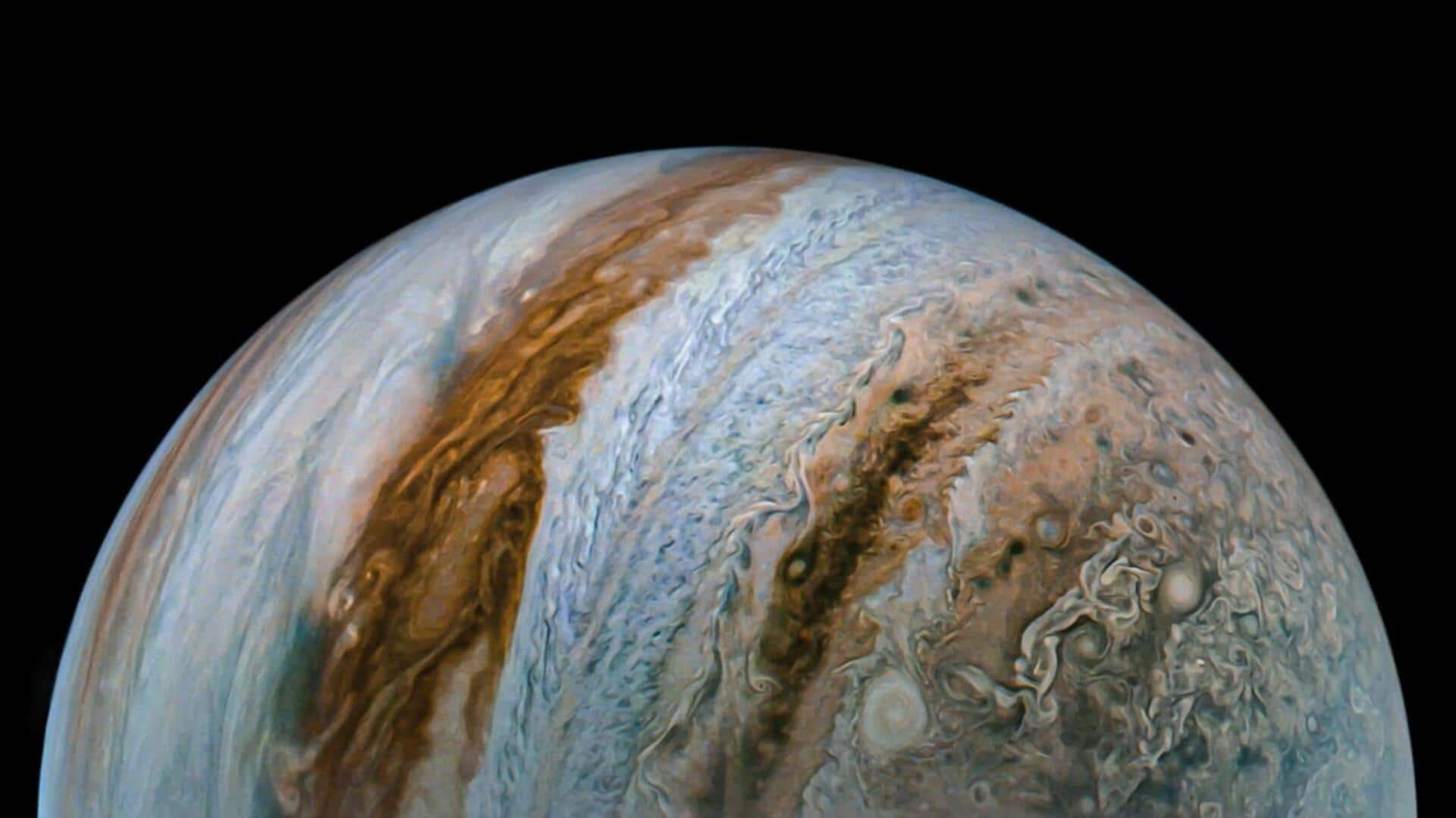
Why Jupiter's rain of ammonia is a puzzle for scientists
What's the story
In a significant discovery, scientists from the University of California have found that Jupiter gets hailstorms of "mushballs" along with intense lightning. These mushballs are essentially slushees of ammonia and water, covered in a hard shell of ice. The researchers think such mushball hailstorms could also take place on other gaseous planets in our solar system, including Saturn, Uranus, and Neptune.
Confirmation
3D visualization confirms 'mushball' hailstorms
The idea of mushballs was suggested in 2020 to account for the uneven distribution of ammonia gas observed by NASA's Juno mission and Earth-based radio telescopes. Chris Moeckel, a UC Berkeley student who worked on this study, was initially skeptical of the theory due to its particular atmospheric conditions. However, after three years of research, he found nothing against it. It was confirmed with a 3D visualization of Jupiter's upper atmosphere, created by Moeckel and his advisor Imke de Pater.
Atmospheric analysis
Weather systems on Jupiter
The 3D visualization showed that most weather systems on Jupiter are shallow, going only 10-20km below the visible cloud deck or "surface" of the planet. However, some weather events occur much deeper in the troposphere, redistributing ammonia and water. The three types of weather events responsible are hurricane-like vortices, hotspots with ammonia-rich plumes wrapping around the planet in a wave-like structure, and large storms generating mushballs and lightning.
Process
'Mushball' formation and atmospheric impact
Planetary scientist Tristan Guillot had proposed that strong updrafts during storms can lift the tiny ice particles high above the clouds, where they mix with ammonia vapor, acting like antifreeze and melting the ice into a slushy liquid. This process results in mushballs capable of trapping large quantities of water and ammonia. These mushballs fall deep into the atmosphere, carrying ammonia with them, thus explaining its scarcity in the upper atmosphere.